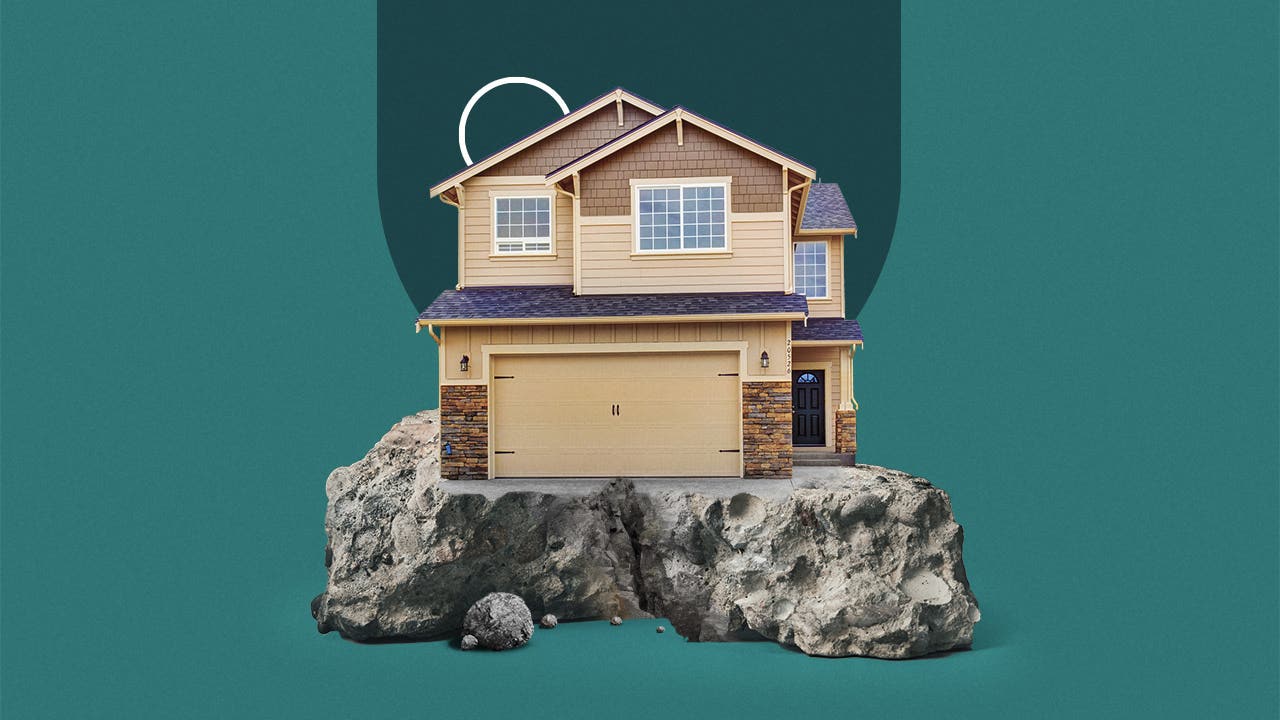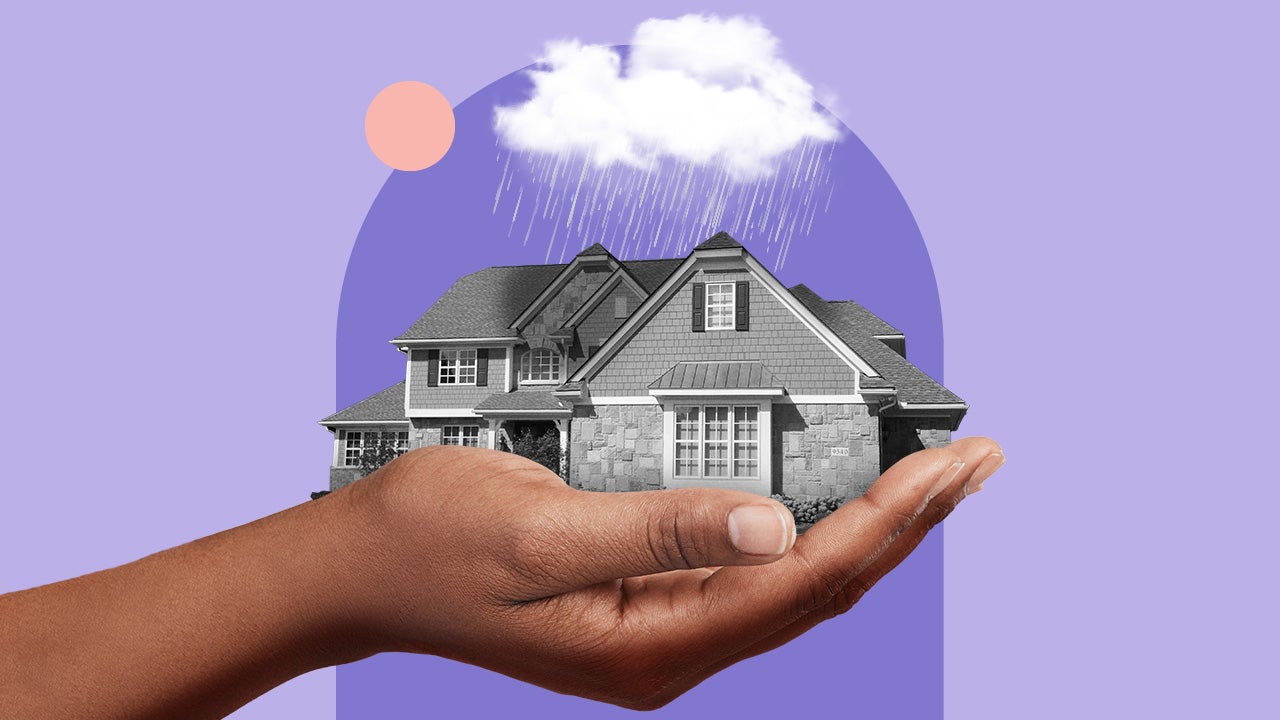Is the housing market going to crash? What the experts are saying

Key takeaways
- Home prices are still reaching historic highs, and are likely to keep growing throughout the busy spring and summer months.
- And while the inventory of homes for sale is steadily increasing, it’s still not enough to meet demand.
- Economists expect that any market correction will be modest and not a crash on the scale of the Great Recession.
To the dismay of would-be homebuyers, property prices in the U.S. just keep rising. Even during the dead of winter, when market activity typically slows to a crawl, it seemed nothing could stop the continued climb of home prices. Now, as we approach the height of spring homebuying season, are they destined for a fall? Here’s what the experts say about a potential housing market crash.
Home prices rise ever higher
After a pandemic-fueled surge, the U.S. housing market had finally started slowing in late 2022, and home prices seemed poised for a correction. But a strange thing happened on the way to the housing market crash: Home values started rising again. So much for the now-quaint notion that the post-pandemic “housing recession” would reverse some of the outsized price gains in homes.
The median price of an existing home in March 2025 — $403,700 — was the highest March median the National Association of Realtors has ever recorded, and the first time the median has ever surpassed $400,000 for that month. Five years ago, at the onset of COVID in March 2020, the median sale price was just $280,700.
In another reflection of ongoing increases, the S&P CoreLogic Case-Shiller home price index for February 2025 was up 3.9 percent from a year earlier.
The overall housing picture is mixed, though. Home values may be setting records, but the volume of home sales has plunged, and despite substantial inventory gains, levels are still too low to meet demand. Homeowners who locked in 3 percent mortgage rates several years ago are declining to sell — and who can blame them, with current rates more than double that? — so the supply of existing homes for sale is staying tight. And tariffs are likely to hamper new construction. As a result, any correction will be nothing like the utter collapse of property prices during the Great Recession, when some housing markets experienced a 50 percent cratering of values.
This boom is far likelier to end in a soft landing. “You are seeing more supply coming on market, and houses taking longer to sell,” says Greg McBride, Bankrate’s chief financial analyst. “We’re going to see pretty tepid home price appreciation going forward.”
Does all this mean we will have a significant decline in home prices? Probably not.
— Ken H. Johnson Housing Economist, University of Mississippi
Ken H. Johnson, a housing economist at the University of Mississippi, agrees with that assessment. Home price appreciation overshot over the past few years, but now prices are being contained by the reality that values have stretched the bounds of affordability to the breaking point, he says.
“Today, home prices — while moderating a little — are significantly above predicted homes prices based on a history of past sales, while mortgage rates remain high,” Johnson says. “Does all of this mean we will have a significant decline in home prices? Probably not. Unlike the last housing crash, the nation is in the grips of a housing shortage, preventing a major decline in home prices.”
-
- According to Bankrate’s weekly national survey of large lenders, the average mortgage interest rate on a 30-year loan was 6.81 percent as of April 30.
-
- Existing-home sales in March fell annually by 5.9 percent, the National Association of Realtors says.
-
- The nationwide median sale price in March was $403,700, NAR says. That represents 21 consecutive months of year-over-year increases.
-
- In March, the housing market had a four-month supply of housing inventory, a marked improvement from a year earlier but still below the five to six months needed for a healthy, balanced market — one that favors neither buyers nor sellers.
-
- A total of 93,953 U.S. homes had foreclosure filings — default notices, scheduled auctions or bank repossessions — in Q1 2025, according to the latest numbers from ATTOM Data Solutions. That’s down 2 percent from a year ago.
The election’s impact on the housing market
In addition to high prices sticking around, consensus among economists is that Trump administration policies will probably lead to higher mortgage rates. President Trump has promised tax cuts, and the U.S. Senate, now controlled by Republicans, is likely to go along — as a result, the federal deficit is likely to grow quite significantly.
“To pay interest on the mounting federal debt, the government has to issue more Treasury bonds,” says Lisa Sturtevant, chief economist at Bright MLS.
Trump’s proposals thus far regarding housing affordability could have a mix of good and bad consequences, says Danielle Hale, chief economist of Realtor.com. “The supply-side policies proposed by President Trump are likely to help increase supply, but demand-focused proposals could have unintended negative consequences,” she says. “A key feature of the Republican Party platform is the pledge to stop illegal immigration. The goal would be to curtail housing demand and thus the cost of housing. But reducing immigration could severely hurt the labor supply needed for new home building.”
In fact, about 31 percent of construction-trade laborers are immigrants, according to data from the National Association of Home Builders. In addition, the administration’s tariffs are expected to increase prices on crucial homebuilding supplies — and those increases will likely be passed along to the consumer.
Supply and demand
The main driver of record home prices is a one-two punch straight from Econ 101 — a lack of housing supply coupled with strong demand. Inventories have been growing but remain frustratingly tight. Not even high mortgage rates have slowed price appreciation. For instance, in October 2023, home values held steady even as mortgage rates soared to 8 percent, their highest level in more than 23 years.
Mortgage rates fell all the way to 6.2 percent in 2024, but they’ve since inched back up closer to 7, despite three Fed rate cuts to close out the year. The average rate for a 30-year fixed mortgage in Bankrate’s weekly survey released April 30 was 6.81 percent.
The fundamental reason for the run-up in price is heightened demand and a lack of supply.— Greg McBride, CFA, chief financial analyst for Bankrate
“You’re not going to see house prices decline,” says Rick Arvielo, head of mortgage firm New American Funding. “There’s just not enough inventory.”
Skylar Olsen, chief economist at Zillow, agrees. “We’re not in that space where things are suddenly going to be more affordable,” she says.
“The fundamental reason for the run-up in price is heightened demand and a lack of supply,” says McBride. “As builders bring more available homes to market and more homeowners decide to sell, supply and demand can come back into balance. It won’t happen overnight.”
Is the housing market going to crash?
No. Housing economists and analysts agree that any market correction is likely to be modest — no one expects price drops on the scale of the declines experienced during the Great Recession.
The likelihood of a market crash is minimal.— Lawrence Yun, Chief Economist, National Association of Realtors
There are still more buyers than sellers, and that means a meaningful price decline can’t happen: “There’s just generally not enough supply,” says Mark Fleming, chief economist at title insurer First American Financial Corporation. “There are more people than housing inventory. It’s Econ 101.”
Dave Liniger, the founder of real estate brokerage RE/MAX, says the sharp rise in mortgage rates has skewed the market. Many would-be buyers had been waiting for rates to drop — but if rates do decline significantly, it could send a rush of new buyers flooding into the market, pushing up home prices. “You’ve got an entire generation of pent-up demand,” Liniger says. “We’re in this fascinating position of tremendous demand and too little inventory. When interest rates do come down, it’ll be another boom-and-bust cycle.”
The numbers don’t represent a crash, but they do show a housing market coming back down to earth.
5 reasons there will be no housing market crash
Housing economists agree that even if prices do fall, the decline will not be as severe as the one experienced during the Great Recession. One obvious difference between now and then is that homeowners’ personal balance sheets are much stronger today than they were 15 years ago. The typical homeowner with a mortgage has stellar credit, a ton of home equity and a fixed-rate mortgage locked in at a rate much lower than today’s figures.
The experts point to five compelling reasons that no crash is imminent.
- Inventories are still too low: A balanced market typically has a five- or six-month supply of housing inventory, and NAR says there was a four-month supply of homes for sale in March. While this is a big improvement — back in early 2022, that figure was a tiny 1.7 months — the ongoing lack of inventory explains why many buyers still have little choice but to bid up prices. And it also indicates that the supply-and-demand equation simply won’t allow a price crash in the near future.
- Builders aren’t building quickly enough to meet demand: Home builders pulled way back after the last crash, and they never fully ramped back up. Now, there’s no way for them to buy land and win regulatory approvals quickly enough to quench demand, so a repeat of the overbuilding of 15 years ago looks unlikely. Navigating the on-again, off-again tariff scenario, which could severely impact prices for lumber, steel and other crucial building materials, makes this even more difficult.
- Demographic trends are creating new buyers: There’s strong demand for homes on many fronts. Many Americans who already owned homes decided during the pandemic that they needed bigger places, especially with the rise of remote working. Millennials are a huge group and in their prime buying years, and Hispanics are a growing demographic also keen on homeownership.
- Lending standards remain strict: Back in 2007, “liar loans,” in which borrowers didn’t need to document their income, were common. Lenders offered mortgages to just about anyone, regardless of credit history. Today, lenders impose much tougher standards — and successful borrowers have excellent credit. The median credit score for new mortgage borrowers in mid-2024 was an impressive 772, the Federal Reserve Bank of New York says. “If lending standards loosen and we go back to the wild, wild west days of 2004-2006, then that is a whole different animal,” says McBride. “If we start to see prices being bid up by the artificial buying power of loose lending standards, that’s when we worry about a crash.”
- Foreclosure activity is muted: In the years after the housing crash, millions of foreclosures flooded the housing market, depressing prices. That’s not the case now. Most homeowners have a comfortable equity cushion in their homes. Lenders weren’t filing default notices during the height of the pandemic, pushing foreclosures to record lows in 2020. And while there has been an uptick in foreclosures since then, it’s nothing like it was.
All of that adds up to a consensus: Yes, home prices are pushing the bounds of affordability. But no, this boom shouldn’t end in bust.
FAQs
Why we ask for feedback Your feedback helps us improve our content and services. It takes less than a minute to complete.
Your responses are anonymous and will only be used for improving our website.






